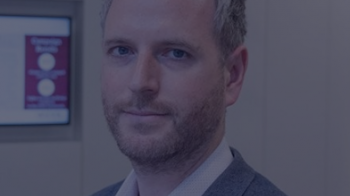Marketing in a Crisis - Unlocking Value
Brendan Hughes - CEO, Bionic
Bionic CEO, Brendan Hughes, delves into what effect the current ‘lockdown’ is having on marketing spend and how marketers can reorient themselves in the current situation
This is a difficult time for many businesses around the globe, with most business leaders expecting financial upheaval for at least six months. Today we are in the eye of the storm, just days into an almost global “lockdown” due to the COVID-19 pandemic. How can marketers reorient themselves within the current crisis in order to emerge in the best possible shape once consumer spend starts to flow again?
Whilst a limited number of retail categories are witnessing a mini-boon; most consumer brands are greatly reducing or pausing marketing spend. However, marketers are already thinking beyond the immediacy of the current crisis and planning for the aftermath, when shareholders will inevitably look to them to help navigate the company back to growth. Psychologist Gary Klein called this the “premortem” - anticipating future scenarios with hindsight in order to better manage conditions right now.
To understand what is happening today and anticipate what might happen once consumer spend opens up, here at Bionic we’ve analysed data from a sample of over 100 clients spending 10’s of millions of pounds and representing a multitude of consumer categories including retail, e-commerce, financial services, automotive and property. We’ve examined marketing performance data over a seven-day period (21-27 March 2020) (when most western countries transitioned into total “lockdown”) and compared this data with like-for-like performance from one month prior.
While some consumer brands have paused their digital marketing, most marketers have managed to maintain a level of digital advertising activity, even though it has been reduced. A selection of brands have actually increased advertising spend. Categories that are responding to the current crisis with increased advertising spend include insurance and financial services, entertainment and gaming services, delivery services and a number of e-commerce categories; such as online grocery shopping, fitness, medication and personal care.
Across all consumer categories, we’ve identified some data points which provide potentially useful signals to marketers for advance planning. During the first seven days of the global lockdown, there has been significantly more value available to marketers from across search, social and display ad channels. The supply and demand economics of these advertising auctions are rather volatile. With immediately reduced demand for advertising inventory the auctions are suddenly less competitive and this is coupled with an increased supply of time-rich consumers who are more active on social media platforms. We can see that very quickly the auction prices have come down, creating opportunities for advertisers.
-
Across all stages of the funnel, marketers’ costs per action reduced on average by 24% within the first week of the lockdown across EMEA markets. In practice, this means that marketers can broadly achieve the same levels of consumer action with just three quarters of what it would have cost just one month ago
-
For all marketers, the greatest value can be achieved at the top of the funnel. The cost to “reach” consumers has declined by a median of 36% within the first week of lockdown
- With more time on people’s hands, the level of engagement with rich media has increased and the cost to achieve 100% view-through of video content has decreased by 23%
- From our research, it is clear that top of funnel marketing is delivering more value right now, but even lower down the funnel, consumers are still engaging with brands and advertisers can achieve increased value. The costs associated with delivering traffic to consumer brands’ websites have reduced by 19% on average
At the very bottom of the funnel, conversion rates are very much dependent on the specific product or service being offered by brands and the data displays significant variability.
One sector that appears to be particularly robust at this time is the financial services sector, including insurance, lending and money management services. Unsurprisingly, consumers are actively engaging with insurance and money management services, such as income protection, life insurance and health insurance. In the first seven days of the current phase of the crisis;
-
Financial services marketers achieved the same volume of consumer reach at less than half (47%) of what it cost just one month previously
-
Consumers are not just researching financial products but are actively converting with costs per lead reduced by an average of 40% across the board for financial marketers
While some sectors are faring better than others, our analysis indicates that most marketers can unlock significant value where they retain access to even reduced marketing budgets. For those categories where consumer purchase intent remains high, the effective acquisition costs when advertising across all stages of the funnel are greatly reduced.
In categories where immediate purchase intent is reduced, consumers do appear to remain open to brand messaging and are actively researching future purchases. Now is a good time to build out audiences who are interested in your product or service offering in a cost-effective way. They may not be in a position to purchase today, but it seems wise to invest in higher funnel initiatives so that when consumer spend starts to flow (and ad auction prices start to rise) you are in a better position to convert already-engaged consumers.
Related content
Contextual Targeting: The answer to ensuring brand safe ad environments?
Learn moreA closer look at third-party cookie matching
Learn moreThe Power of First-Price Auctions
Learn moreIt’s Time to Pay Attention to Attention!
Learn more
Fast forward to 2030 with Futurescape
An in-depth exploration of the attitudes, innovations and media shifts that will shape the years ahead and redefine how we advertise by the turn of the decade



